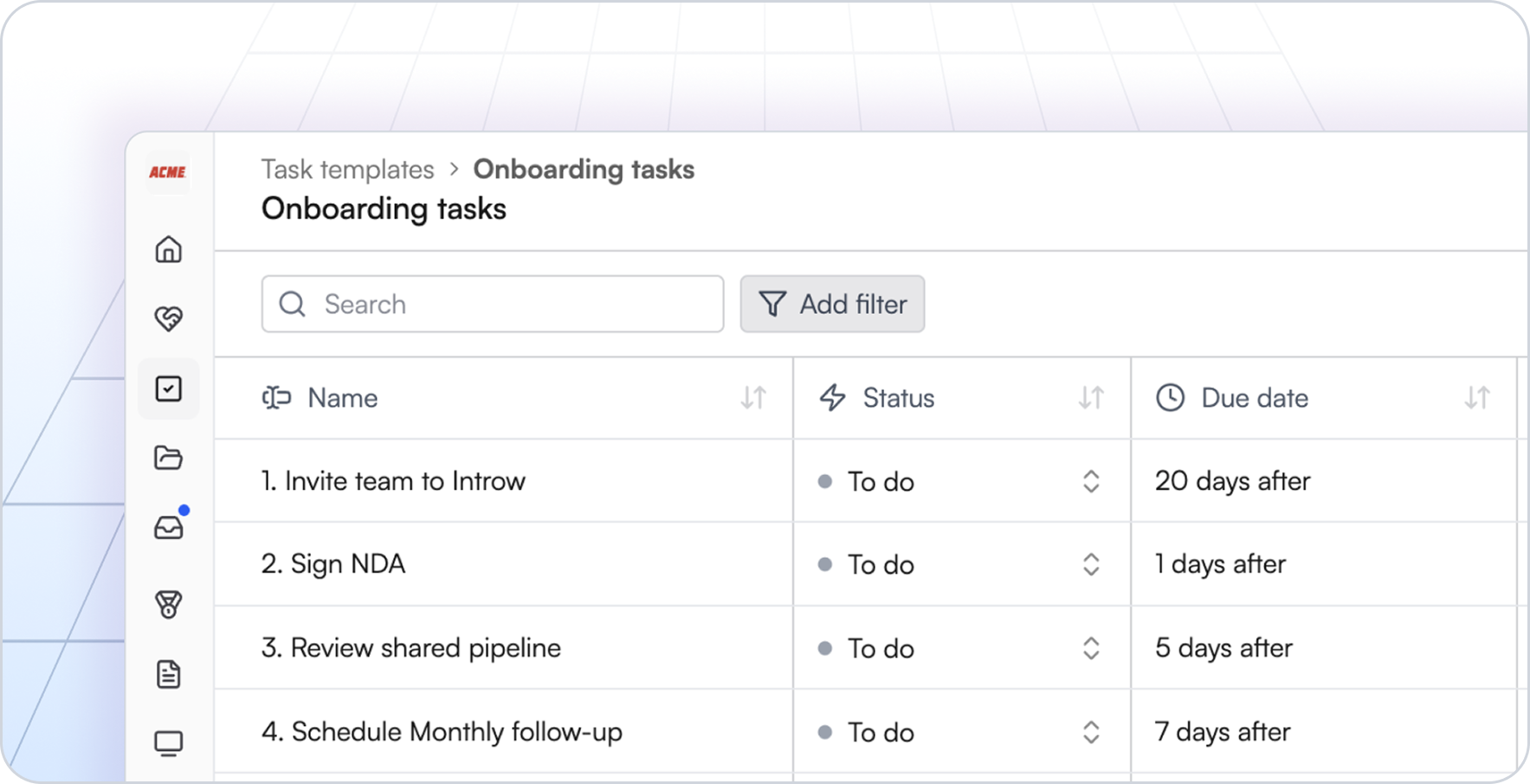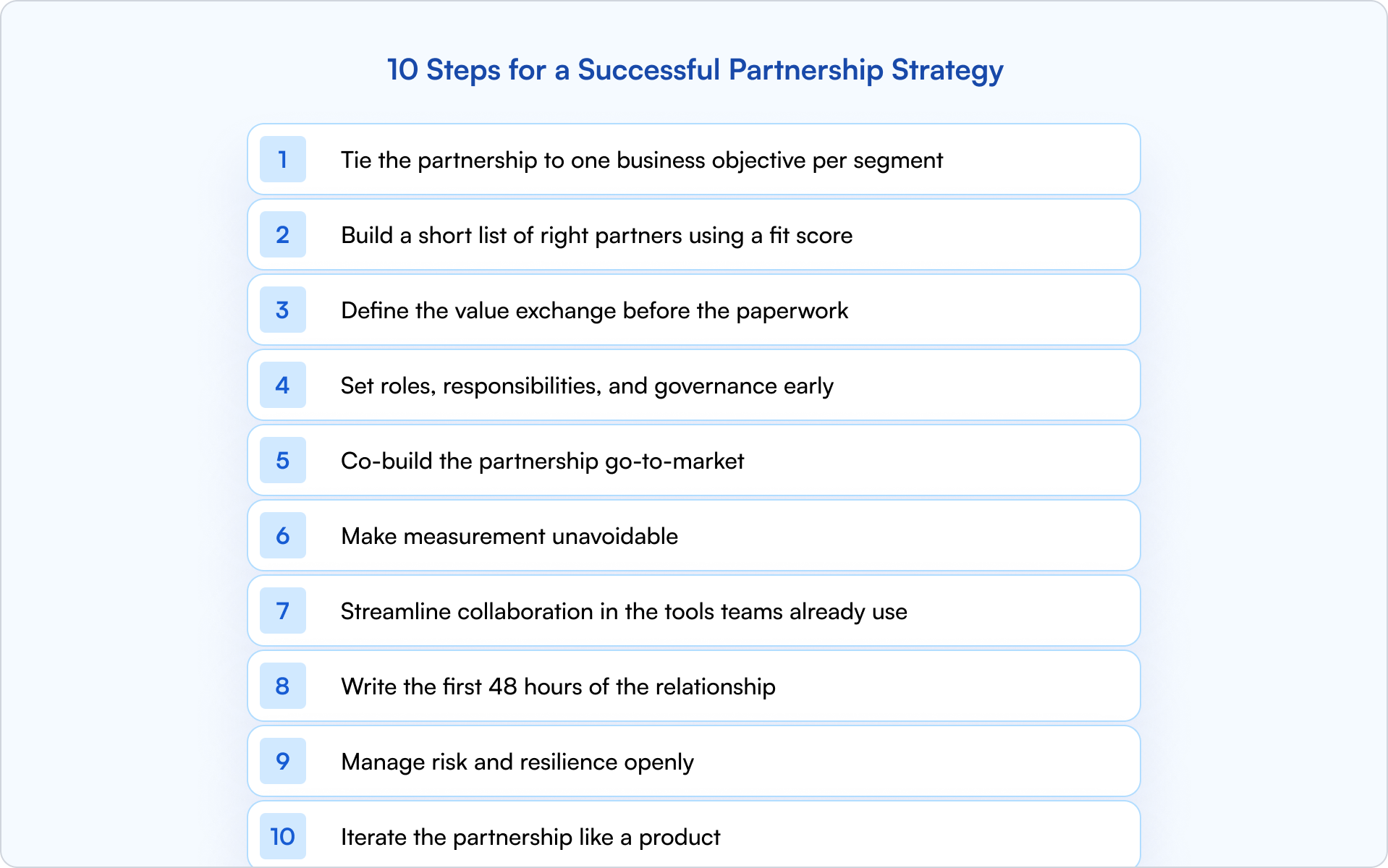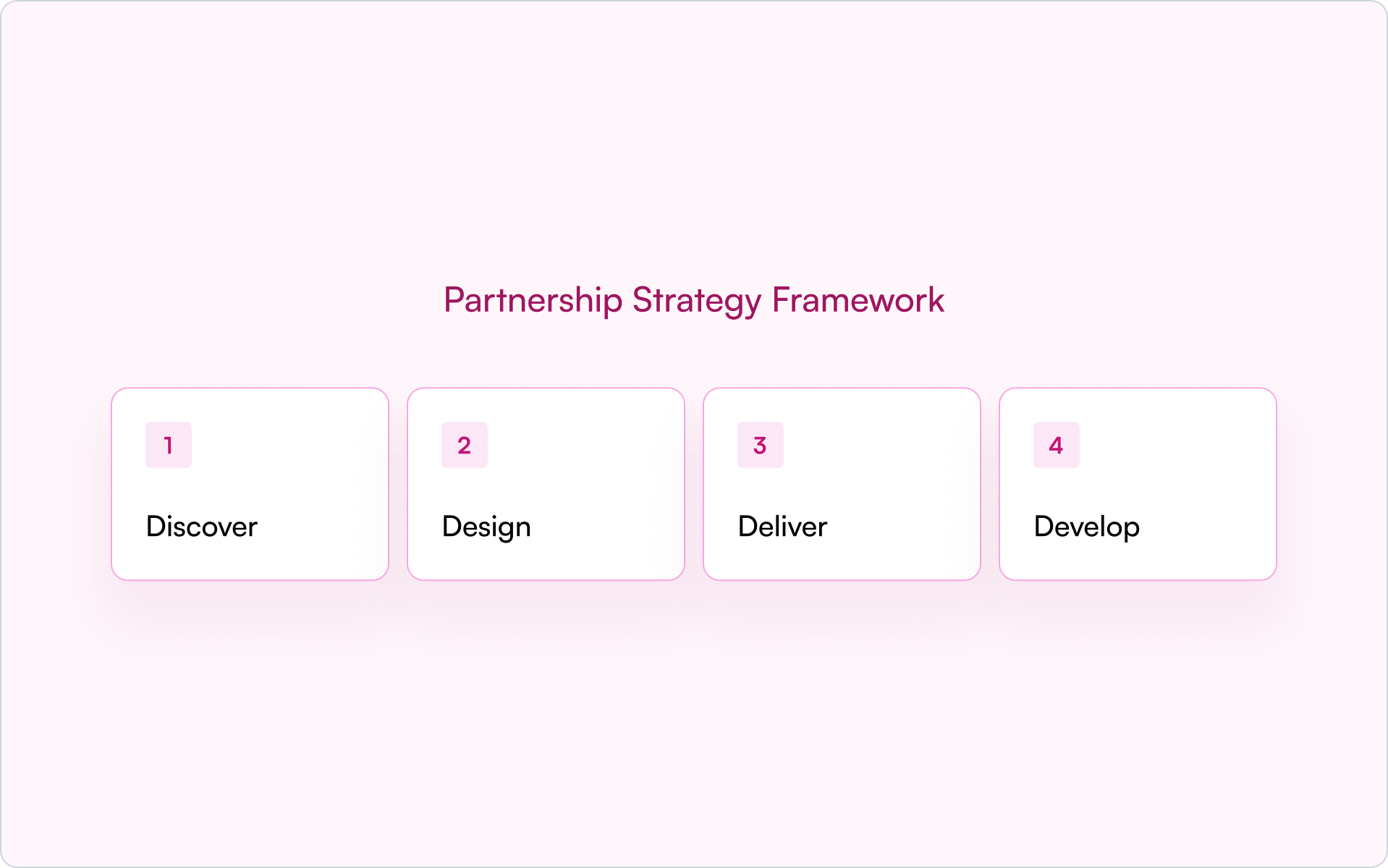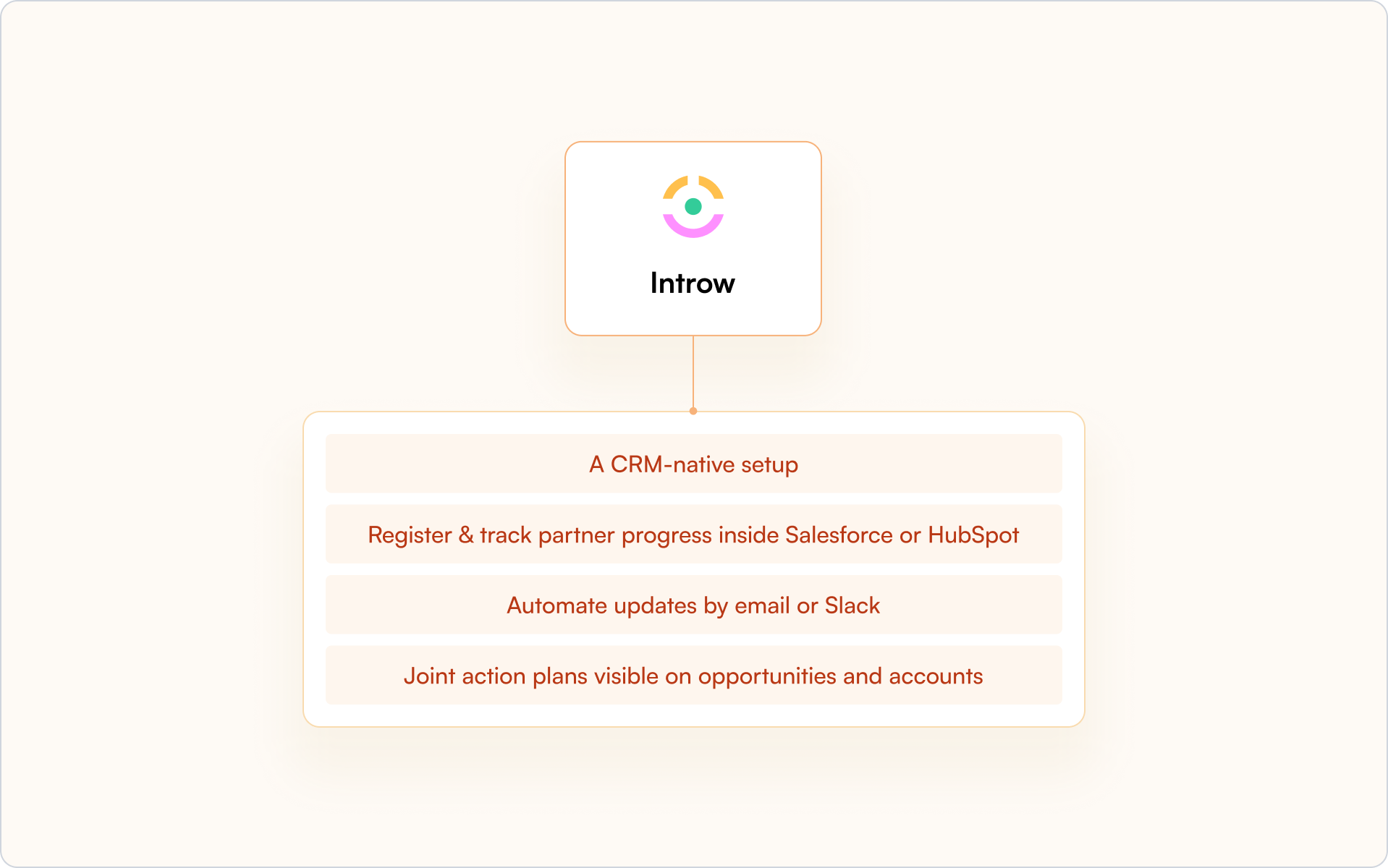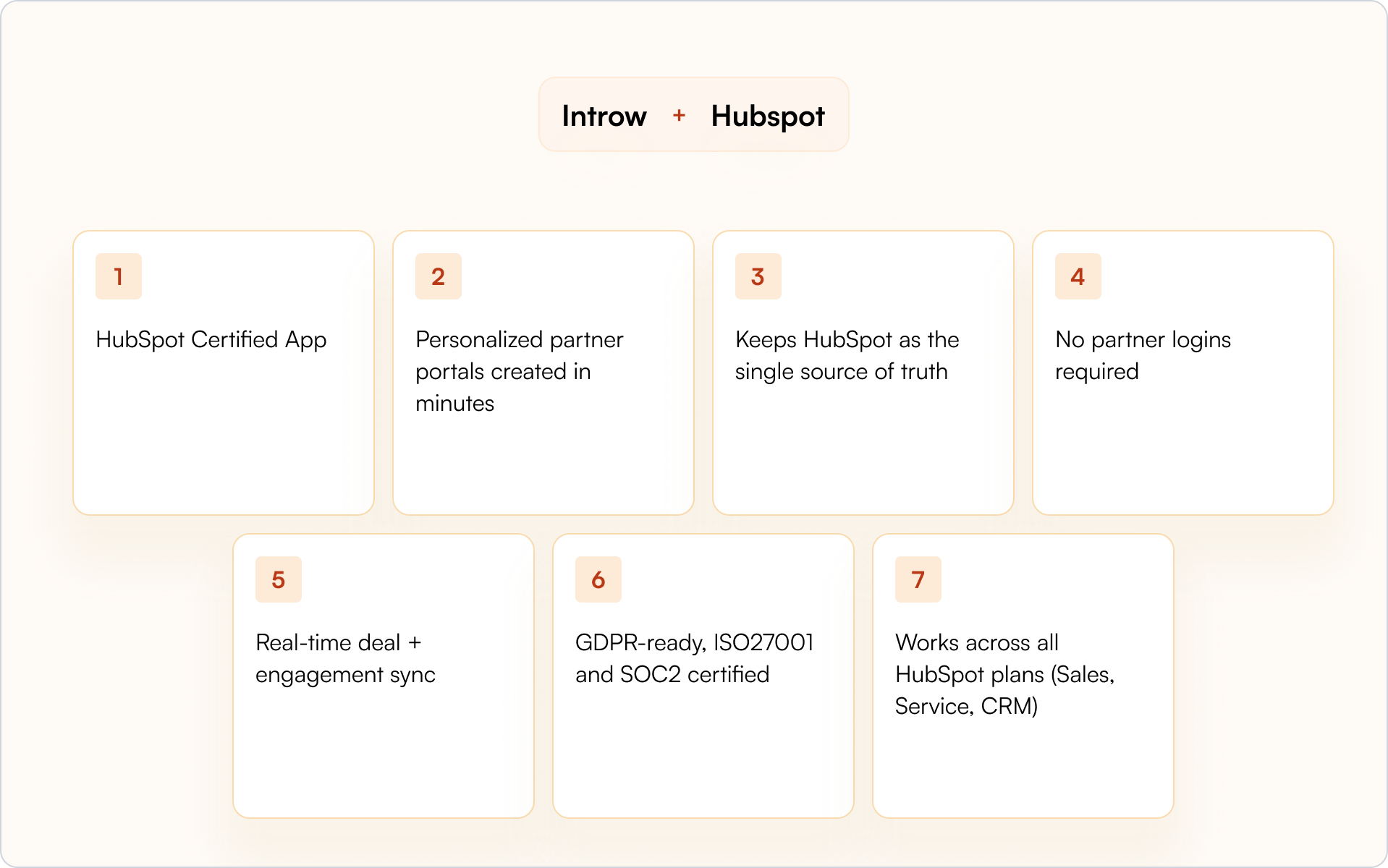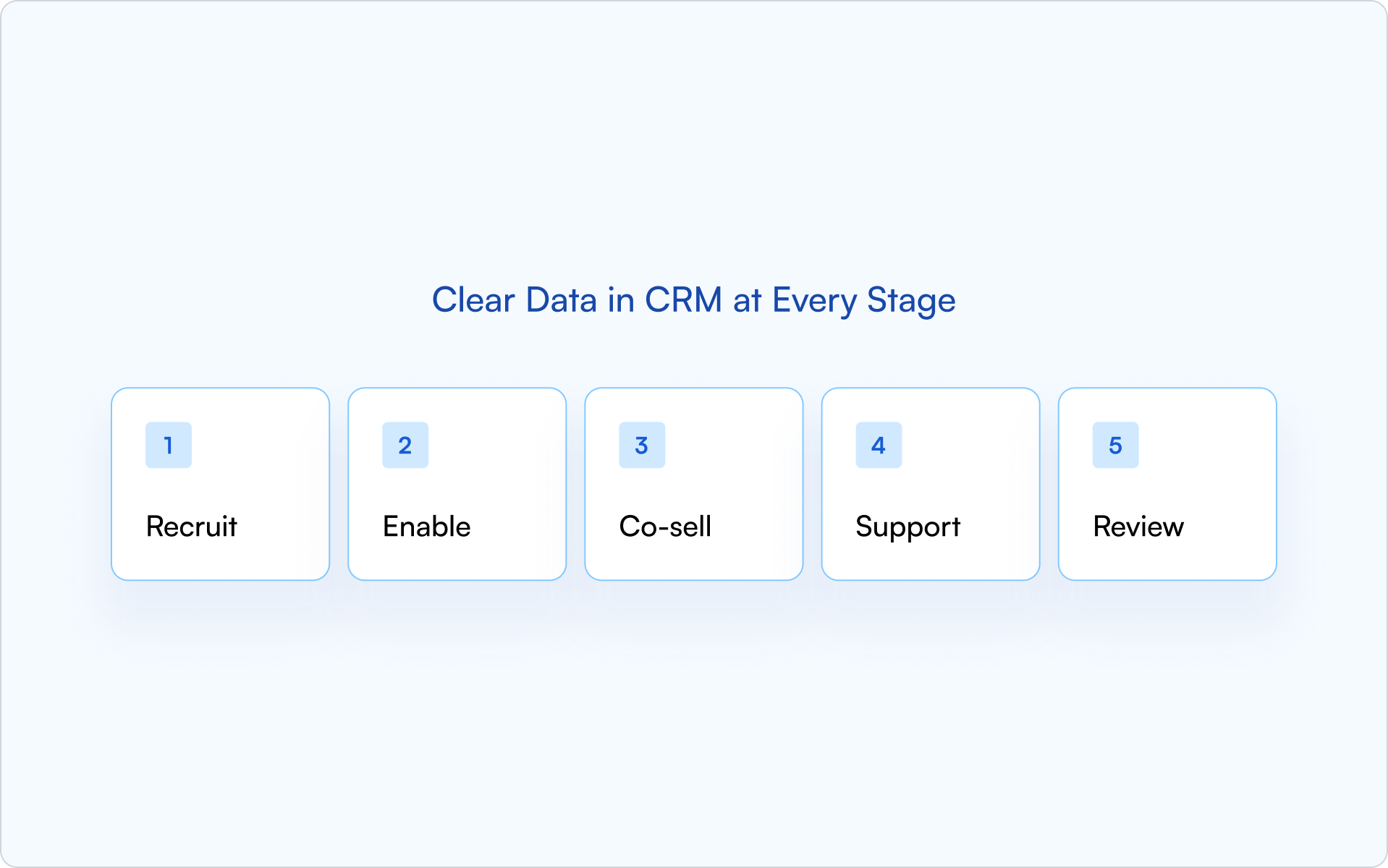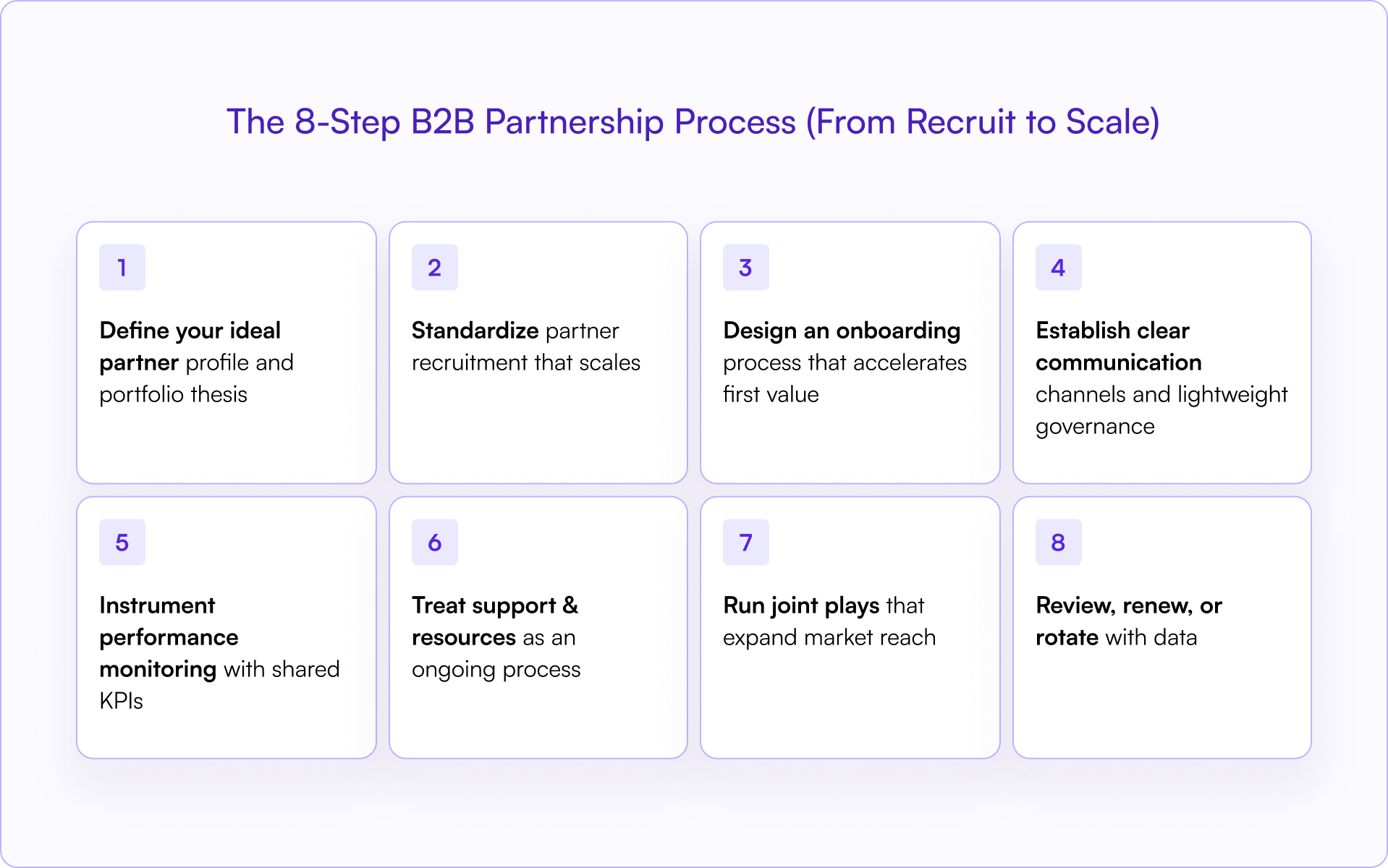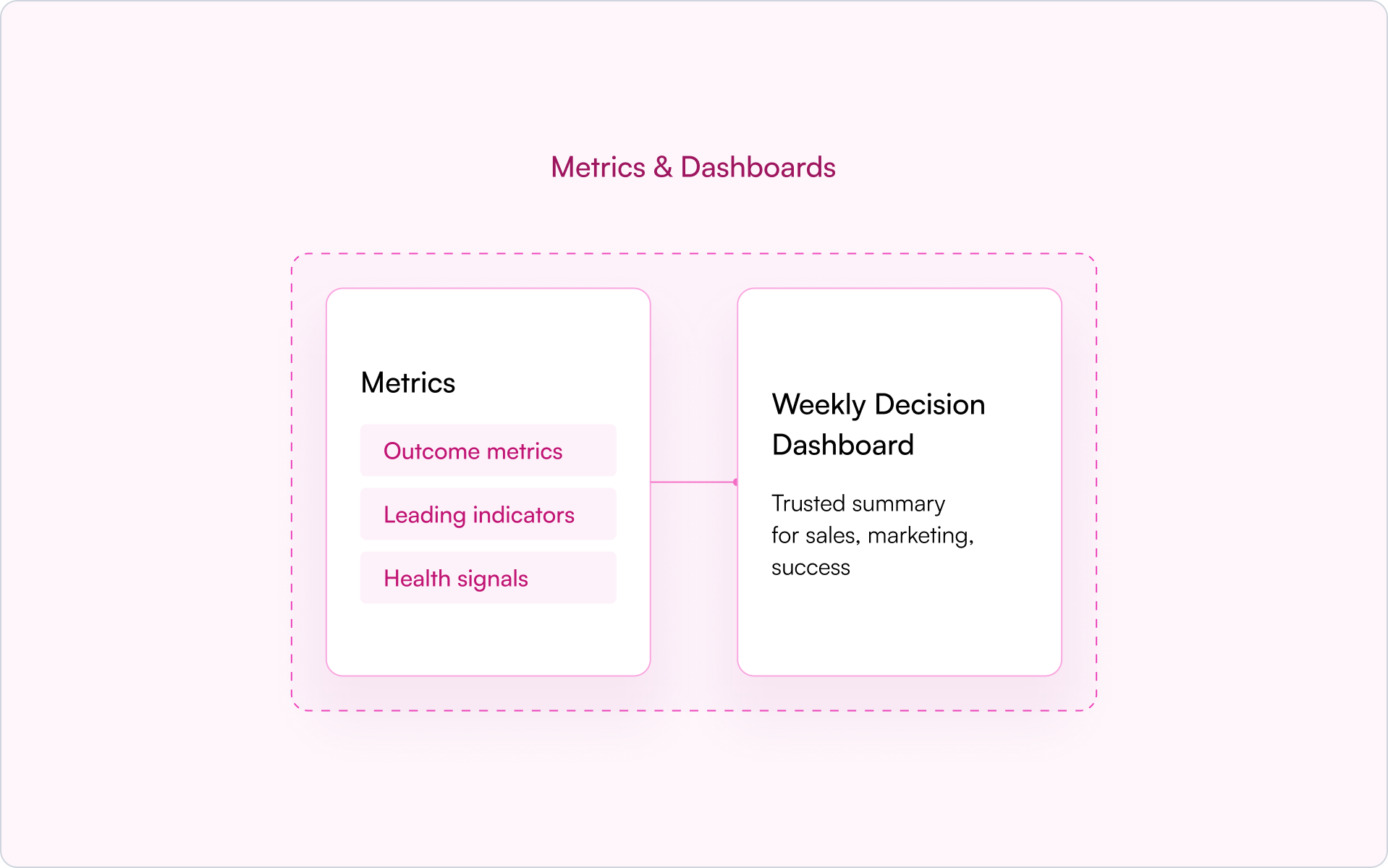SaaS companies often overlook partner onboarding.
Indeed, onboarding is often viewed as merely a list of tedious administrative tasks that must be completed before the real work can begin.
Furthermore, siloed ownership of tasks within the onboarding process means that, in many cases, no-one really takes accountability for the performance of the whole process.
And finally, the revenue impact of onboarding is typically long-term and, in the past, was difficult to track.
However, as we’ll explore in this guide, when done well, onboarding can be a powerful tool in your partnership arsenal.
Read on to discover the ten essential strategies you need to make onboarding work for your business to lay the foundations for long-term partner success.
Why Partner Onboarding Is a Make-or-Break Moment for SaaS
Once upon a time, onboarding was little more than an administrative checklist to get through.
Contract signed? Check. Orientation? Check. Training? Check.
But modern SaaS brands demand much more from their onboarding programs.
Leaders need to frame onboarding as a revenue strategy in its own right.
After all, a robust partner onboarding process can lay the groundwork for a thriving business with a healthy revenue pipeline.
Develop a fast, seamless, and effective B2B partner onboarding program, and you can expect early wins, high adoption rates, and loyalty.
However, if you fail to effectively harness the power of onboarding, you’re not only missing out on valuable opportunities to engage new partners, but you may also be actively harming your chances of future joint success.
Ultimately, poor onboarding leads to lost revenue, wasted investment, and partner churn.
What Is Partner Onboarding? (2026 Definition & Key Stages)
In the B2B space, channel partner onboarding is a structured process in which a business equips its new partners with all the things they need to sell, market, and support its product or service.
This means effectively and efficiently passing on knowledge, tools, resources, and support to your new partners, while also successfully engaging them with your business.
It’s vital you don’t mix up the principles and goals of customer onboarding – which most B2B brands are very familiar with – with those of partner onboarding.
While customer onboarding teaches buyers how to successfully adopt and gain value from your product, the goals of a new partner onboarding process include driving joint revenue, expanding market reach, and boosting ecosystem growth.
The key stages of B2B partner onboarding are:

- Signed agreement and set-up: This is when you finalise your contracts, provide access to relevant systems, and integrate the new partner into your CRM or PRM.
- Orientation: It’s time to properly introduce your company! Go in-depth on your brand, SaaS product ecosystem, value proposition, and partner program structure.
- Enablement and training: Perhaps the longest stage of partner onboarding, during this phase you must deliver role-based training, certifications, and playbooks.
- Go-to-market planning: Define your target customers, joint messaging, campaigns, and pipeline expectations.
- Execution and first wins: Support your partners through their early milestones, from their first demos to their first implementations.
- Ongoing support: Don’t abandon your partners after they’re up and running. Instead, perform regular check-ins and performance reviews, and roll out advanced training and attractive incentives.
10 Essential Strategies for Modern Partner Onboarding in 2026
As outlined above, modern SaaS brands require modern partner onboarding programs.
So how can you elevate your partner onboarding scheme to make it fit for 2026?
Read on for our ten essential modern partner onboarding strategies.

1. Pre-Onboarding Prep: Start Before the Contract
When it comes to effective partner onboarding programs, the prep starts before the contract is signed.
So, what happens at this early stage?
You’ll want to start with an internal team sync.
Bring sales, operations, and enablement together to ensure each team is aligned on partner fit and to set goals and KPIs, ensuring all stakeholders understand what success looks like.
Together, the teams also set realistic expectations, outlining what level of support and resources they can actually deliver and when, and identify any potential bottlenecks.
Finally, it’s vital that by the end of this phase, the ops team understands precisely what is required in terms of setting up systems and processes for the new partner.
Before the contract is signed, it’s also important to customize the onboarding plan for the new partner and gather all the necessary assets for the process.
If you’re using Introw, this is when you’ll set up your onboarding checklist to track and automate the onboarding process.
Introw empowers users to create structured onboarding flows and mutual action plans, enabling them to track partner responsibilities easily.
Set up and scale task templates, assign internal staff members or partner owners to tasks, and automate updates, which can be tracked via Slack or email.
2. Segment & Personalize the Onboarding Experience
Not all partners have the same goals, capabilities, or needs – but they do all expect a personalized onboarding experience.
Remember, this is your partner’s first real impression of your SaaS brand, so it’s essential to make a good impression.
To achieve a personalized onboarding experience, first, you must segment your partners.
Depending on your company and your goals, you may want to segment by:
- Partner type (for example, reseller, referral, tech, MSP)
- Location
- Partner tier
By segmenting these groups, you can then develop personalized communications and enablement paths tailored to each segment.
While personalization may seem time-consuming, Introw enables users to create structured onboarding flows and set up conditional content access, empowering you to segment and personalize at scale.
3. Automate Welcome & Kickoff Communications
While more in-depth onboarding communications are best left to humans, automating your welcome and kickoff communications is a must.
Why?
Firstly, automating this vital early communication enables you to track, analyse, and optimise – and then standardize – your messaging.
Of course, this messaging should be personalized.
Introw’s built-in messaging tools enable you to keep your partners in the loop with branded email announcements, templates that are personalized by partner type or tier, and announcement pop-ups in the partner portal.
Remember that your welcome comms need to be multi-channel – for instance, across email and Slack.
In addition to ensuring that all your partners receive the same effective welcome and don’t miss out on any important information due to human error, it also saves your team time.
Generally, welcome messaging includes assets like:
- Welcome kits
- Orientation content
- “Who’s who” intros
4. Deliver Role-Based Enablement & Certification
The best onboarding programs in 2026 don’t offer one-size-fits-all training.
Instead, they empower partners with targeted, role-based training from a comprehensive learning management system, with course content tailored to specific roles within partner organizations.
This is because not every partner, or every contact within a partner organization, requires the same level of knowledge.
For instance, sales reps require education around product positioning, objection handling, and competitive insights, while technical or implementation staff require deeper knowledge regarding product set-up, integration, and troubleshooting skills.
Meanwhile, marketers should be targeted with co-branding guidelines, campaign playbooks, and messaging alignment.
Modular training and interactive resources work well for partner onboarding as this breaks the learning into manageable chunks that partners can complete at their leisure.
Once modular, interactive training is set up, there’s little left to do.
You can simply assign modules by role, set up notifications of training completion, and it’s also easy to update training materials when necessary.
5. Make Deal Registration Fast and Frictionless
When we talk about user experience in SaaS, we’re typically considering customer satisfaction.
But don’t underestimate the importance of providing your partners with a fast, frictionless experience too.
With Introw, partners can register leads and deals on- or off-portal – whatever works best for them.
You can build lead and deal registration forms with a no-code editor and sync them to your CRM, so there’s no need for manual data entry.
From a partner’s perspective, no logins are needed – lead and deal registration forms can be accessed via a link, email, or Slack.
And don’t forget to set up autosync with your CRM for instant pipeline visibility.
6. Provide “Always-On” Resource Access
‘Always-on’ resources make the onboarding process more flexible and accessible for time-poor partners.
Consider using a self-service portal or content hub to host FAQs, playbooks, and pitch decks that partners can access at their convenience.
Introw provides analytics for every engagement metric, empowering you to track which items of content are regularly being used, and which aren’t.
Indeed, with Introw, you can track asset views and downloads to see which documents, resources, and deals your partners are engaging with.
You can then analyse this data to optimize your portal and its content accordingly.
7. Assign Dedicated Onboarding Support
Assigning dedicated onboarding support for partners – as opposed to more general support – ensures a smoother and faster ramp-up.
Depending on the scope of your program, the dedicated onboarding support could be a full-time partner success manager, an AI onboarding concierge who follows each partner throughout their onboarding journey, or even a peer mentor.
Remember – when offering support, it’s essential to conduct proactive check-ins at key milestones, rather than asking broad, passive questions.
✅ DO: “Now that you’ve completed the initial marketing training modules, how confident do you feel about positioning our product to your customers? Would you like additional guidance or resources in [X] area or [Y] area?”
❌DON’T: “Let us know if you have any questions”.
Introw’s AI agent is built to power smarter partner support, empowering businesses to easily train, optimize, and deploy their bot, all from one place.
The AI agent automatically converts existing content into actionable answers, and you can also create snippets to ensure important FAQs are answered with the correct information.
You can also give the AI agent a custom name, voice, and brand to ensure the support feels personal and on-brand.
8. Run Automated Progress & Activation Tracking
Use real-time dashboards to track partners’ progress and activation automatically.
Identify when training programs are completed and deals are registered in real time, and keep an eye on the number of portal visits by partners, too.
This allows you to spot minor issues and take swift action before they snowball into disengagement by, for example, nudging those partners who stall or need extra help.
Introw’s extensive partner engagement tracking capabilities make it easy to see which partners are active, engaged, and delivering value.
9. Schedule Early-Wins and QBRs
An important element of partner onboarding is building up momentum and getting your partners excited about working with you.
Scheduling early wins is the most effective way to do this.
Help your partners close their first deal fast, and you’ll help to build their confidence and motivation while implicitly demonstrating the value of your partnership.
What’s more, this encourages their adoption of your processes, tools, and best practices by linking them to tangible wins.
Establishing your quarterly business reviews (QBRs) early on in the partnership complements the early wins part of the strategy by ensuring your partners feel valued and heard.
This establishes a regular feedback loop and strategy review, identifies challenges and bottlenecks (ideally before they arise), and reinforces your relationship-building efforts, showing partners that you’re genuinely invested in them.
Perhaps most importantly, setting up your QBRs early on strengthens your strategic alignment.
So what should this look like?
Set up 30-, 60-, and 90-day check-ins to ensure you always have a meeting in the calendar to look forward to.
Introw PRM makes QBR prep easy thanks to its centralized partner activity, pipeline data, and performance metrics inside your CRM.
This means no slide decks, scattered spreadsheets, or lengthy prep sessions trying to collate and interpret all the data.
10. Gather Feedback & Continuously Optimize
As with any business process, it’s crucial to gather feedback on your B2B partner onboarding program and continuously optimize for success.
What should this look like?
- Onboarding surveys
- Open office hours
- A partner advisory board
- One-on-one check-ins
- Email feedback requests
- In-portal feedback tools
- Post-training quizzes with feedback prompts
- Net promoter score
This partner feedback must then be used to refine your content, each stage of the onboarding process, and onboarding support.
4 Best Practices to Avoid the Most Common Onboarding Pitfalls
Ready to build your onboarding process? There are several common pitfalls you’ll want to avoid.
Here are our four partner onboarding best practices to follow.

- Avoid Manual, Spreadsheet-Driven Processes
Time-consuming, ineffective, and prone to human error, in 2026 there’s simply no need for manual, spreadsheet-driven onboarding processes.
By replacing clunky spreadsheets with sophisticated PRM platforms fit for 2026, you can boost data accuracy, scale your program, and significantly increase your speed and efficiency.
- Don’t Force One-Size-Fits-All: Segment And Automate!
When dealing with a diverse partner network, a one-size-fits-all approach can result in low engagement or even complete alienation.
Fortunately, personalization has never been quicker or easier.
Indeed, using a PRM platform, you can automatically segment your partners and automate much of their personalized communication.
- Ensure Two-Way Communication (Listen, Don’t Just “Tell”)
Making feedback easy is crucial for optimizing your processes and for building strong partner relationships.
It’s crucial to give your partners a choice of channels in which they can engage in two-way communication with your brand.
This could be email, portal, and Slack, for example – just ensure you’re meeting your partners where they’re already working.
Then, you need to encourage this open and transparent communication through prompts, questions, surveys, and rapid responses.
- Track Real Activation, Not Just ‘Training Completed’
The breadth and depth of metrics that PRMs can track in 2026 empowers channel managers to track real activation.
While tracking ‘training completed’ gives you an indication of how ready your partners are to bring in business, tracking metrics like time to first deal, first revenue generated, and product usage paints a fuller picture.
How to Measure Partner Onboarding Success in 2026
While we’re on the subject of metrics, which KPIs should be used when it comes to measuring success around partner onboarding?
While the exact combination of KPIs tracked will vary from business to business, depending on their specific circumstances, business objectives, and goals, the following metrics are always useful.
- Time to first deal
- Enablement completed
- Content usage
- Partner NPS
- Time to productivity
- Onboarding completion rate
- Assessment scores
- Engagement levels
- Pipeline contribution
You’ll also need to tie your onboarding success to downstream revenue to truly appreciate the impact of your program and measure ROI.
In order to achieve this, you need to first define ‘successful onboarding’ in measurable terms — for example, first lead or deal registered. Then, track onboarding speed (aka time to value).
Next, correlate onboarding with partner revenue performance by comparing the performance of partners who completed full onboarding with those who only partially completed onboarding.
Segment partners by onboarding completion level (for example, fast vs slow, complete vs incomplete), and track their revenue across 3, 6, 9, and 12 months. Then analyse your results, and use your findings to optimize your onboarding program.
For optimal results, utilize dashboards to track progress and identify at-risk partners early.
Modern Onboarding Tech Stack: What to Look For
Building your onboarding tech stack?
Make sure your software incorporates:
✅ CRM integration
✅ Automation
✅ Real-time tracking
✅ Self-serve resources
Take a look at Introw. This CRM-native PRM comes complete with handy automation capabilities and is seamless for both partners and managers.
Example: The Introw Automated Partner Onboarding Flow
So what does a partner onboarding flow look like with Introw automating the journey?

Step 1: Signup
A potential partner decides to sign up to your program via your portal or an embedded page.
At this point, Introw creates and/or updates the CRM record, assigns them to the appropriate tier, and generates the relevant program benefits.
Onboarding tasks are auto-generated from a template.
Step 2: Kickoff
The partner immediately receives a welcome pack and their onboarding checklist via email or Slack, with no portal login required.
The same tasks are reflected inside the dedicated partner portal, allowing them to self-serve.
Step 3: Enablement Content
Introw sends the partner the enablement content they need, such as sales tools and marketing materials, based on tier and partner type.
When items are opened or downloaded, you (and the partner) receive alerts, and you can see which assets they are using.
Step 4: Engagement Tracking
As the partner works their way through their tasks, Introw logs portal visits, content usage, and notification opens and clicks.
This data is then automatically sent back into your CRM for RevOps and forecasting.
Step 5: Deal Registration
The partner has identified an opportunity!
They will now submit it from the portal, or directly from Slack or email via a form.
This opportunity is then automatically mapped to your CRM, attributed to the relevant partner, and will be sent for any required approvals.
Step 6: Co-sell & Support
Your sales rep and the partner collaborate in one shared space.
If a customer raises a question, either party can open a support ticket and communicate with the other about it in real-time.
Step 7: Automated Status Comms
As the opportunity moves forward, Introw sends the partner automatic deal updates and keeps everyone aligned, again via email and/or Slack.
Step 8: First Win
Congratulations! The partner has brought in their first win.
Introw will now fire over a win notification to the partner in question, and also attach attribution to the deal.
If you’re using a commission structure to reward partners for hitting sales targets, the PRM will update commission workflows in light of the first win.
Step 9: Feedback Loop
After the first win, Intow immediately switches into feedback mode.
It will encourage partners to fill in a brief survey to capture what has helped or hindered the partner on their journey to their first win.
You can also see which content and touchpoints correlated with success in this instance, so your next partner can ramp up even faster!
Step 10: CRM Reporting
As Introw is a CRM-first platform, RevOps and leadership see everything directly in your CRM, from partner-sourced/influenced revenue to engagement scorecards and content impact.
Forecast accuracy improves because the partner pipeline is live and attributed.
Conclusion
Onboarding is the partner revenue lever that many teams ignore.
It’s easy to see why: onboarding is often viewed as little more than admin, ownership within the process is typically siloed, and any revenue impact is relatively long-term.
However, dismissing the revenue potential of a strong partner onboarding program is a huge misstep.
We know that building a top-notch structured partner onboarding process can lead to a lower time-to-first-revenue, boost retention and lifetime value, and set good engagement habits early.
Furthermore, external partners who complete a structured onboarding are generally more likely to register a deal or make a sale.
In other words, mutual success!
Without onboarding, you end up with ‘signed but silent’ partners.
With this in mind, is it time to audit your onboarding?
Consider where in the process you can add in more automation, personalization, and tracking to boost business growth.
Next step: Explore how Introw helps SaaS teams activate partners, faster
What Is The Most Important Part Of Partner Onboarding in 2026?
Every stage of the partner onboarding process is important, but the beginning stage – where you lay the groundwork for a successful partnership – is paramount. This is all about ensuring partners fully understand your company’s value proposition, target market, processes, and support structure, and generally outlining how you intend to proceed. So how can you achieve this while bringing onboard partners? Structured training courses, granting partners’ access to strong resources, and working to establish clear communication channels.
How Long Should a SaaS Partner Onboarding Process Take?
The length of SaaS partner onboarding processes varies significantly, depending on the size of your company, the complexity of your product and/or service, and the type of partner program you’re operating. That said, generally you can expect to complete your channel partner onboarding checklist in 30 to 90 days. Simpler solutions or referral partnerships may only take a few weeks, however, while more technical reseller or implementation partners could be in this phase for up to three months.
Can Onboarding Be Automated Without Losing The Human Touch?
Yes, onboarding can absolutely be automated without losing the human touch. The key to getting automation right is utilizing these tools where they excel, while also recognizing that a human-led approach is optimal in other areas. For instance, when it comes to partner onboarding, automation can be used for initial training modules and certifications, like online courses and quizzes; resource distribution, in order to provide partners access to sales decks, playbooks, and product info; process management, such as onboarding checklists, progress tracking, and task reminders; and basic communication, including welcome emails, FAQs, and self-service support portals. Meanwhile, human-led tasks include things like relationship building, such as kick-off calls and email check-ins; strategic alignment around goal setting, joint business planning, collaborative projects, and co-marketing discussions; complex training – while automation can handle basic partner training tasks, you’ll want human experts to help partners understand product deep dives, demos, and hands-on workshops. Problem-solving should remain in human hands, with your team best placed to address unique partner challenges and provide bespoke guidance.
Which Metrics Should We Use To Measure Onboarding Success in 2026?
To gain a comprehensive picture of the success of your channel partner onboarding process, you’ll need to track a combination of metrics related to engagement, enablement, and partner performance. Your partner onboarding checklist for metrics should include time to first deal, enablement completed, content usage, time to productivity, onboarding completion rate, assessment scores, partner engagement levels, pipeline contribution, and partner satisfaction scores.


.svg)



















